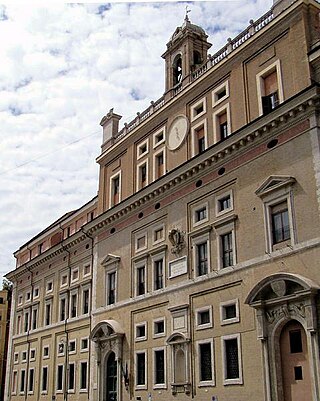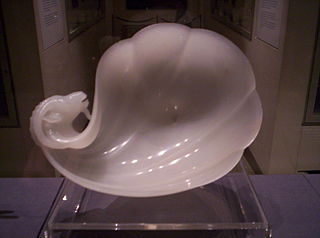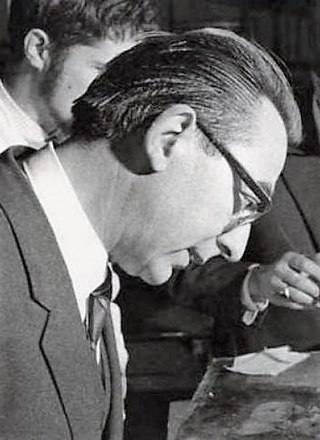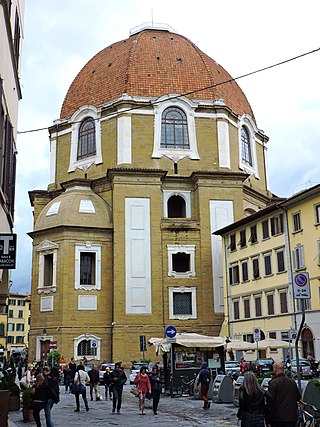
Pietra dura or pietre dure, called parchin kari or parchinkari in the Indian Subcontinent, is a term for the inlay technique of using cut and fitted, highly polished colored stones to create images. It is considered a decorative art. The stonework, after the work is assembled loosely, is glued stone-by-stone to a substrate after having previously been "sliced and cut in different shape sections; and then assembled together so precisely that the contact between each section was practically invisible". Stability was achieved by grooving the undersides of the stones so that they interlocked, rather like a jigsaw puzzle, with everything held tautly in place by an encircling 'frame'. Many different colored stones, particularly marbles, were used, along with semiprecious, and even precious stones. It first appeared in Rome in the 16th century, reaching its full maturity in Florence. Pietra dura items are generally crafted on green, white or black marble base stones. Typically, the resulting panel is completely flat, but some examples where the image is in low relief were made, taking the work more into the area of hardstone carving.

Jacopo Ligozzi (1547–1627) was an Italian painter, illustrator, designer, and miniaturist. His art can be categorized as late-Renaissance and Mannerist styles.

The Gabinetto Scientifico Letterario G. P. Vieusseux, founded in 1819 by Giovan Pietro Vieusseux, a Protestant merchant from Geneva, is a library in Florence, Italy. It played a vital role in linking the culture of Italy with that of other European countries in the 19th century, and also became one of the chief reference points for the Risorgimento movement.

Maurizio Seracini is a self-proclaimed diagnostician of Italian art.
Events from the year 1588 in art.

Giovanni Dupré was an Italian sculptor, of distant French stock long settled in Tuscany, who developed a reputation second only to that of his contemporary Lorenzo Bartolini.

The Ministry of Culture is the ministry of the Government of Italy in charge of national museums and the monuments historiques. MiC's headquarters are located in the historic Collegio Romano Palace and the current Minister of Culture is Gennaro Sangiuliano.

Hardstone carving is a general term in art history and archaeology for the artistic carving of predominantly semi-precious stones, such as jade, rock crystal, agate, onyx, jasper, serpentinite, or carnelian, and for an object made in this way. Normally the objects are small, and the category overlaps with both jewellery and sculpture. Hardstone carving is sometimes referred to by the Italian term pietre dure; however, pietra dura is the common term used for stone inlay work, which causes some confusion.

Hardstone is a non-scientific term, mostly encountered in the decorative arts or archaeology, that has a similar meaning to semi-precious stones, or gemstones. Very hard building stones, such as granite, are not included in the term in this sense, but only stones which are fairly hard and regarded as attractive – ones which could be used in jewellery. Hardstone carving is the three-dimensional carving for artistic purposes of semi-precious stones such as jade, agate, onyx, rock crystal, sard or carnelian, and a general term for an object made in this way. Two-dimensional inlay techniques for floors, furniture and walls include pietre dure, opus sectile, and medieval Cosmatesque work – these typically inlay hardstone pieces into a background of marble or some other building stone.

Umberto Baldini was an art historian and specialist in the theory of art restoration.
Clelia Giacobini was an Italian microbiologist, and also a pioneer of microbiology applied to conservation-restoration.
The ISCR is a body of the Ministry of Cultural Heritage and Activities and tourism in Rome. Together with the Opificio delle Pietre Dure in Florence, it is one of the most notable and prestigious institutes in the field of art restoration and art restoration instruction.

The Sala delle Asse, is the location of a painting in tempera on plaster by Leonardo da Vinci, dating from about 1498. The decoration is of a room in the Castello Sforzesco in Milan. Its walls and vaulted ceiling are decorated with "intertwining plants with fruits and monochromes of roots and rocks" and a canopy created by sixteen trees.

The Casino Mediceo di San Marco is a late-Renaissance or Mannerist style palace located on Via Cavour number 57 and via San Gallo in Florence, region of Tuscany, Italy.

The Palazzo Giugni, also called the Palazzo Firenzuola, is a late-Renaissance or Mannerist architecture palace designed by Bartolomeo Ammanati, and located on Via degli Alfani #48 in the quartiere San Giovanni of Florence, region of Tuscany, Italy. It is located down the street from the Brunelleschi's church of Santa Maria degli Angeli.
The Kimbolton Cabinet is an ornate wooden cabinet on a stand, designed by Robert Adam and completed in 1775. It is in the collection of the Victoria and Albert Museum.
Commesso, also referred to as Florentine mosaic, is a method of piecing together cut sections of luminous, narrow gemstones to form works of art. Precise patterns are cut into a slab of marble. Gems are then cautiously cut and meticulously inlaid into these patterns. The work is then polished section by section, as it cannot be polished as a whole due to gems having different hardnesses. The practice, which began in Florence, Italy, dates back to at least the 14th century and gained prominence just before the 17th century. Some of its uses include making pictures and decorating furniture and architecture.

Cristina Acidini is an Italian author and art historian. Her name also appears as Cristina Acidini Luchinat. She is the former Superintendent of Museum and Artistic Heritage State Board for the Florence area from 1991 to 1999.

The Castelfiorentino Madonna is a tempera and gold on panel painting attributed to Cimabue, dating to c.1283-1284. Showing a half-length Madonna Odigitria-type Madonna, it originally hung in the collegiate church of Santi Lorenzo e Leonardo but now hangs in the Museo di Santa Verdiana in Castelfiorentino.

Cappella dei Principi is the mausoleum of the Grand Dukes of Tuscany and their families and is part of the museum complex of the Medici Chapels of Florence, adjacent to the Basilica di San Lorenzo
















